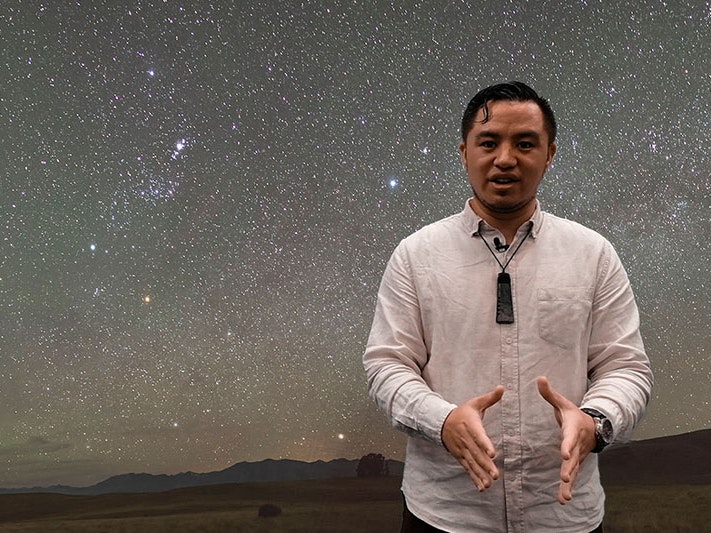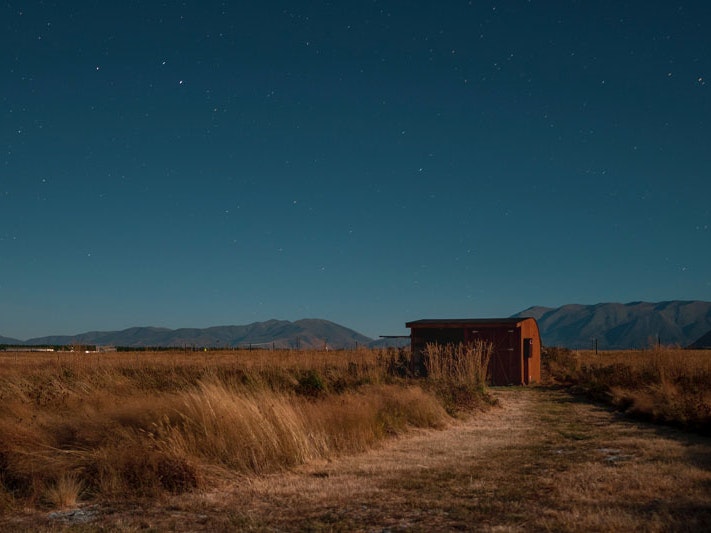
Watch: How to find the Matariki star cluster
Educator Hauiti Gardiner shows you how to find the Matariki star cluster during the Māori New Year, which falls in the month of Pipiri (June–July).
Free museum entry for New Zealanders and people living in New Zealand
Open every day 10am-6pm
(except Christmas Day)
Free museum entry for New Zealanders and people living in New Zealand
Get the facts about Matariki – a star cluster known worldwide and treasured in Aotearoa New Zealand.
1. Matariki is a star cluster, not a constellation.
A cluster is a group of stars that are near each other. When seen from Earth, stars in a constellation appear to be close together in a pattern but they might actually be nowhere near each other. There are over 500 stars in the Matariki cluster.
2. The heliacal rise of Matariki.
The heliacal rise is when a star or planet is seen on the eastern horizon just before the rising of the sun. For Matariki to be visible as a heliacal star it needs to be at least 5° above the horizon while the sun is at least -16° below it. Any closer and the light of the sun will make Matariki invisible. In Aotearoa, the heliacal rising of Matariki occurs mid-winter.
3. You can see Matariki for yourself.
When Matariki rises during mid-winter (June/July), look towards the eastern horizon before the sun rises, and follow these steps to find Matariki:
Find three bright stars in a line. Māori call these stars Tautoru; they are also known as Orion’s belt.
Next, trace to the left of Tautoru until you come to a group of stars that look like a pyramid. This is Te Kokotā.
Finally, if you look to the left of Te Kokotā you will see Matariki.
Watch a video on how to find Matariki
4. Matariki is one of the closest star clusters to Earth.
Compared with other star clusters, Matariki is close to Earth – but it is still 440 light-years away. If you drove there in a car at a speed of 100 kilometres an hour, you would arrive in ... 4.8 billion years!
5. Matariki has many different names around the world.
Matariki is visible to the naked eye from most parts of our planet, and is known by many different names. In Greek, and widely used in English-speaking countries, it is called Pleiades. In Japan, it is called Subaru, which means ‘to come together’. In China it is Mao, the hairy head of the white tiger, and in India it is known as Krittika.
In Greek mythology the cluster is known as the seven sisters, and in Norse mythology the Vikings knew them as Freyja’s hens.
Press the ▶ below to hear how you pronounce ‘Matariki’.
6. Matariki is an official public holiday in Aotearoa New Zealand.
The Te Kāhui o Matariki Public Holiday Act 2022 came into effect in April 2022. The dates for the Matariki holiday will change from year to year, but will always fall in June or July. The holiday date falls on the closest Friday to the Tangaroa lunar period of Pipiri.
Dates for the Matariki public holiday
7. Matariki has an apparent magnitude of 1.6.
Every star or astronomical object is given their own apparent magnitude value, which is used to describe how bright it appears in the sky as seen from Earth. Apparent magnitude depends on both luminosity and distance from Earth. The higher the value, the dimmer the object, and the lower the value, the brighter the object. For comparison, the Sun has an apparent magnitude of -26.8.
8. Matariki disappears during the year.
Matariki is clearly visible for most of the year, however it disappears from view towards the beginning of winter. This is because of its proximity to the Sun, which blocks our view of the cluster during this time.
9. Matariki was used by the ocean-going navigators (kaumoana) of the voyaging waka to guide them across the Pacific.
Navigators used stars and star clusters such as Matariki to help them navigate great distances across the Pacific. Today, there is a revival of these traditional navigation skills. Kaumoana have sailed double-hulled waka across the Pacific ocean guided only by traditional methods.
Learn about traditional navigation methods that enabled extraordinary voyages through the Pacific

Educator Hauiti Gardiner shows you how to find the Matariki star cluster during the Māori New Year, which falls in the month of Pipiri (June–July).

You’ve read our Matariki resources – now it’s time to test your knowledge!